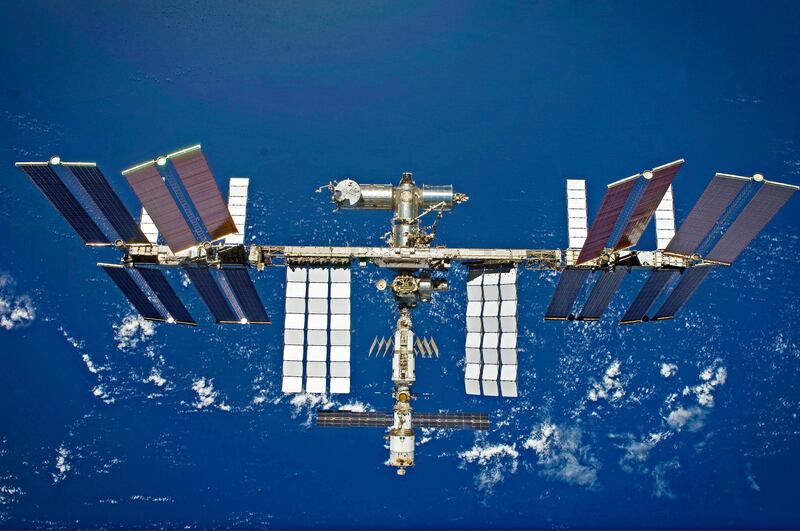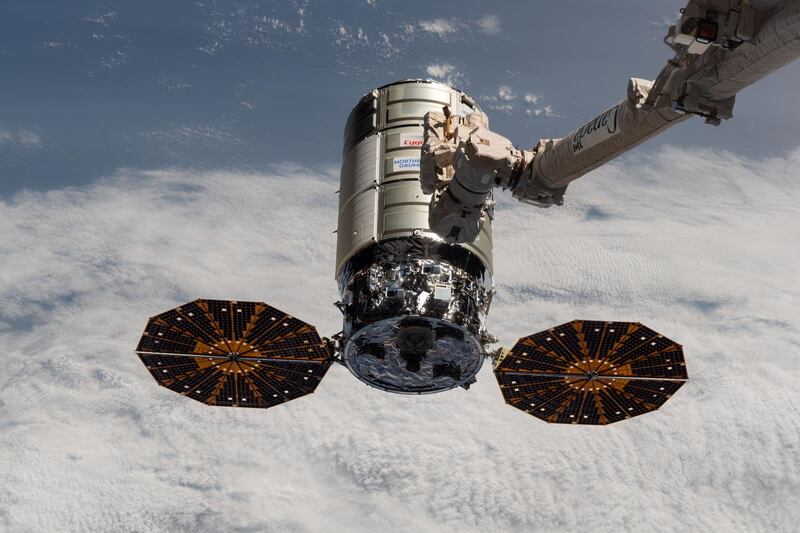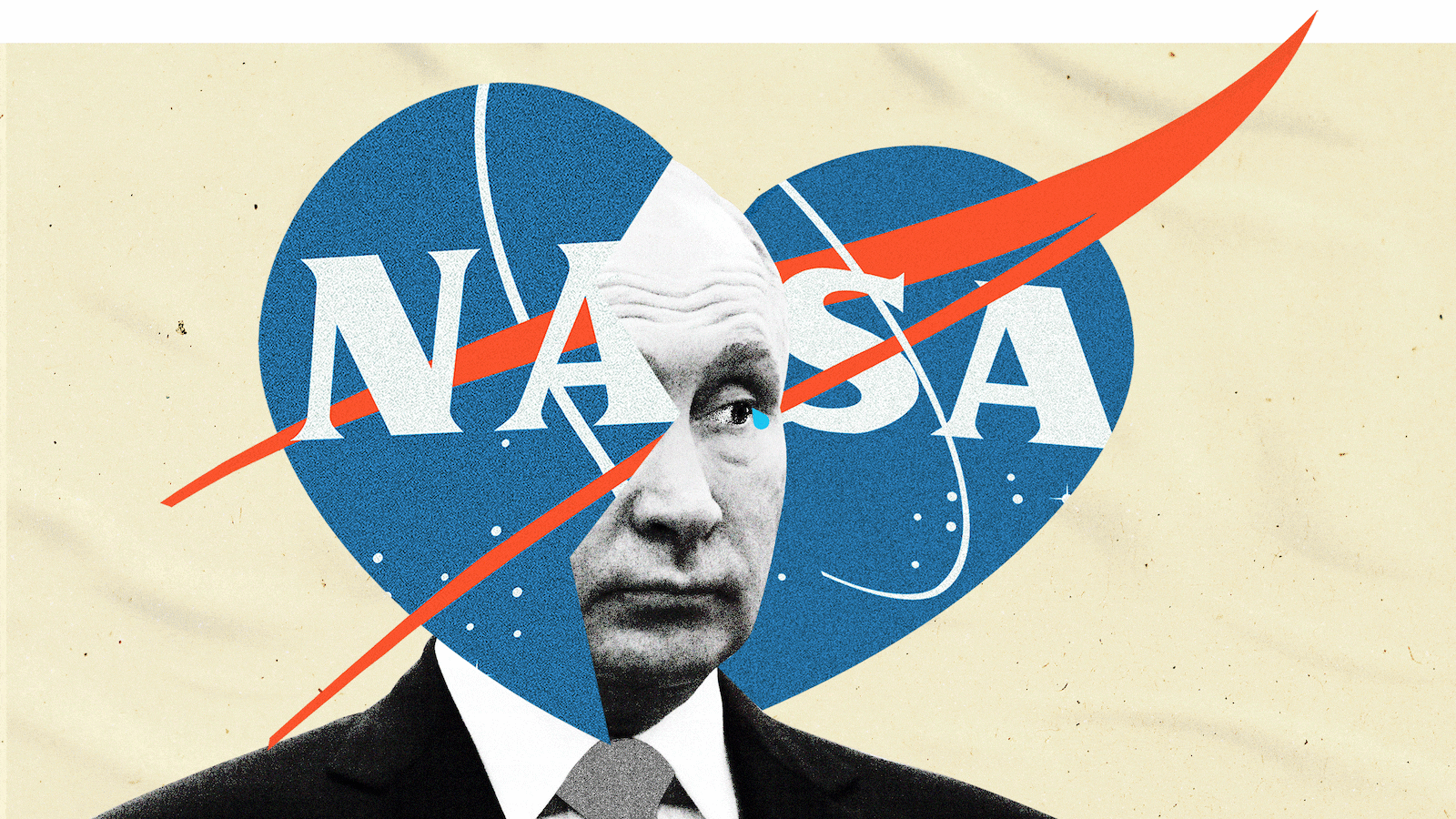Over a generation of cooperation in space between the U.S. and Russia could be winding down fast, in the wake of Russia’s invasion of Ukraine and the resulting economic sanctions imposed by much of Europe and the U.S. Dmitry Rogozin, the head of Russia’s space agency Roscosmos, has spent the last several days strongly suggesting that his country was gearing up to pull out of its commitment to the International Space Station soon, as well as nix its other partnerships with NASA and the European Space Agency.
“Roscosmos will reconsider its priorities and focus on achieving full import independence in matters of space instrumentation,” Rogozin tweeted out on Tuesday. This follows a barrage of incendiary comments sent days before, in which Rogozin decried how new sanctions would affect the Russian space program, and effectively threatened that without Russia, the ISS would uncontrollably fall out of orbit and crash into the U.S., or even India or China.
The temperature is rising for all sides involved, and some parties have already taken action. For instance, Germany’s Max Planck Institute turned off the main instrument on Russia’s Spektr-RG research satellite. Russia is threatening to refuse the launch of more satellites from UK internet firm OneWeb. Europe’s joint Martian rover mission with Russia, ExoMars, is now “very unlikely” to launch this year, which would push the mission back to 2024 at the earliest. “Cooperation is falling apart in areas where it can,” John Logsdon, a space policy expert at George Washington University, told The Daily Beast.
But the ISS is a place where both sides really depend on each other. The station is divided into two parts: the Russian side; and the NASA-led side that includes Europe, Japan, and Canada. There are currently four Americans, two Russians, and a German living in the ISS. There are also currently two NASA astronauts training with Roscosmos, and three Russian cosmonauts training with NASA.

The International Space Station.
NASAThe entire station—including the Russian side—depends on power from NASA-operated solar panels that adorn the spacecraft. And the ISS stays in orbit thanks to Russian Progress vehicles that are docked to the station and periodically fire their thrusters to maintain proper altitude.
“NASA continues working with all our international partners, including the State Space Corporation Roscosmos, for the ongoing safe operations of the International Space Station,” the agency said in a statement to The Daily Beast. “The new export control measures will continue to allow U.S.-Russia civil space cooperation. No changes are planned to the agency’s support for ongoing in orbit and ground station operations.” NASA said it expects no changes to upcoming crewed missions to and from the station.
A breakup of the ISS partnership could go a few different ways. It’s unlikely that Russia would entirely abandon the ISS. After all, it owns half of it and has poured billions of dollars into building out and maintaining those structures in space. Without the ISS, it loses a sustained human presence in orbit.
Russia could just remove its modules from the ISS and operate them as part of a separate space station of some kind. Logsdon pointed out very little science is run in those modules, so a separation of the ISS wouldn’t really impact any ongoing research.
But as noted earlier, the country doesn’t have a way to independently power them yet.
Meanwhile, the U.S. and its partners would have to figure out how to keep the orbiting laboratory from crashing back to Earth. One option could be to use Northrop Grumman’s ISS resupply vehicle, Cygnus, to replace the Progress spacecraft’s propulsion functions. Cygnus is being tested for that very purpose later this month. “If that test is successful, then Russia could leave with fundamentally no technical or programmatic consequences for the U.S. side,” said Logsdon.

Northrop Grumman's Cygnus spacecraft as it approaches the ISS.
NASAElon Musk has suggested SpaceX’s vehicles could do the job, too—though it would need some modifications. NASA eventually wants Boeing’s upcoming Starliner spacecraft to perform this task, but that vehicle has yet to fly successfully to the ISS, and is years behind schedule anyway.
“Beyond that, fitting solar electric thrusters to the station could be a good solution,” Greg Autry, a space policy expert at Arizona State University, told The Daily Beast. NASA and space tech company Maxar are already working on that for the upcoming Lunar Gateway space station that would support future moon missions. “Perhaps that hardware could be diverted or scaled up.”
Unfortunately none of these is a reliable, immediate solution. “It would be very difficult for us to be operating on our own,” NASA Associate Administrator Kathy Lueders told reporters Monday.
A breakup in a couple years was already a possibility—Russia was only formally committed to the ISS until 2024, although most parties involved expected the country to renew its partnership for at least a few more years. “I’m sure the preferred outcome before the invasion was to maintain Russia as a partner through the whole lifetime of the ISS,” said Logsdon. “Because that's the way [the ISS] was designed.” NASA currently wants to keep the ISS running until 2031.
On Tuesday, however, Roscosmos told Russian news agency TASS: “The issue of extending the [ISS] agreement in the current conditions causes our skepticism.” Although Rogozin is no stranger to controversy and provocation, his comments suggest an accelerated exit is more than a distant possibility.
Still, Autry is skeptical Russia would rashly pull out of the ISS any time soon. “It would leave their human program without purpose, a huge blow to national prestige,” he said. “Going on their own is expensive and I doubt their own cosmonauts want to be totally dependent on Russian hardware at this point,” referring to the abysmal quality control of Russia’s own space technologies.
There’s the possibility that Russia would start working more closely with the Chinese (the two countries have already ironed out loose agreements for cooperating on the moon). “But given Russia’s unreliability in both technical execution and political behavior, I’m not sure China really wants them,” said Autry. “Playing junior partner on a China station is also a blow to their egos.”
What seems most likely is that NASA and Russia will continue to work together as needed through 2024 and possibly a few years beyond. But once a clean and orderly exit strategy is reached, the ISS will probably be the final major space partnership between Russia and the West. “I’m sure there are people at NASA who must be eager to get out of this dysfunctional relationship, where a drunk Dmitry Rogozin threatens to let the ISS drop on India or China,” said Autry. “That can’t thrill those countries either.”






